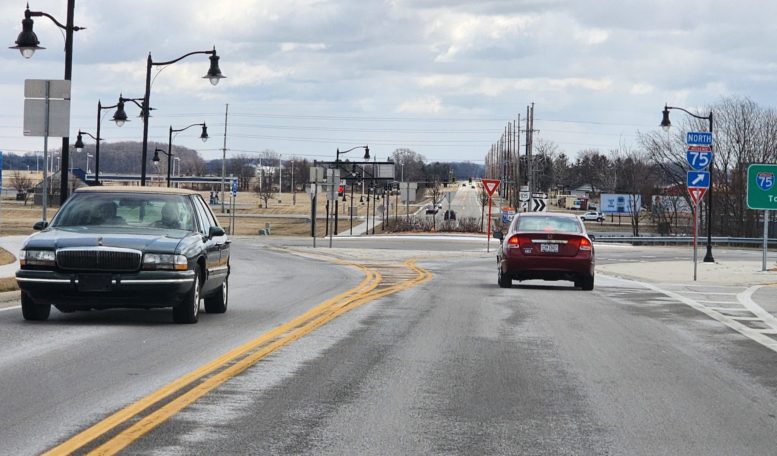Police can now pull drivers over for using a phone absent any other pretext, but they won’t begin writing tickets until October
BY NICK EVANS
Beginning today it’s a primary offense to use your phone while driving. That means law enforcement can pull drivers over for using their phone without any other pretext.
The measure carries several exceptions, including allowances for hands-free operation, but Ohio Department of Transportation guidance warns, “in most cases, anything more than a single touch or swipe is against the law.”
What’s in and what’s out?
The new law comes with a six-month grace period in which law enforcement will pull over distracted drivers and give warnings to help educate the public.
The growing pains could be significant.
Browsing the internet, streaming video, and playing games, of course are all off the table. But after the most obvious violations, things get murky.
Even brief interactions like dialing a phone number or entering an address are off limits. But workarounds like voice-to-text or digital assistants like Siri are ok. Although drivers can’t dial a phone number while driving, they can talk with the phone up to their ear.
In an indication of just how complicated the messaging will be, Ohio’s “phones down” website lists using a phone while stopped at a traffic light as one of the law’s exceptions. The website also says, “even if you can, that doesn’t mean you should.”
“Looking at your cell phone while stopped at a light can potentially endanger your family, friends, and neighbors,” it goes on to state. “Drivers have a responsibility to watch for people crossing the street or other drivers and bicyclists who haven’t yet cleared the intersection.”
But for all the confusion, Ohio Department of Public Safety chief Andy Wilson argued similar legislation in other states is “making a difference.”
“For example,” he offered, “Oregon and Washington saw significant drops in rear end crashes when they broadened their laws to prohibit holding a cell phone as compared to when they only had banned texting.”
Governor’s message
At a press conference Monday, Gov. Mike DeWine was unequivocal about the benefits.
“This law will clearly save lives,” DeWine insisted. “There’s absolutely no doubt about it. It will spare many families the grief and the sorrow that unfortunately many of our families have suffered in the last few years because of distracted driving.”
He handed the floor over to Leah Fullenkamp, whose husband John was killed by a distracted driver in 2018. John was driving a tractor between two fields when a driver who was shopping online rear-ended him. Leah explained he died on the scene before first responders could get him to a hospital.
“When you picture the driver of the SUV,” Fullenkamp said, “You’re likely picturing a young driver — maybe even a teenager. But that wasn’t the case. The driver was in her mid-50s.”
“Using a phone while you’re driving is something that affects people of all ages, races, and backgrounds,” she said.
In addition to the six-month, grace period Department of Transportation director Jack Marchbanks explained teams are busy installing signage along freeways.
“You’ll see ODOT crews finishing up installation of 45 new signs,” Marchbanks said, “posted at the entrances to our beautiful state, on Interstate and US Highways and exits to our state’s largest airports in Akron, Cleveland, Columbus, Dayton and Toledo.”
New penalties
Once police begin issuing citations in early October, successive violations will face escalating penalties. The first offense within two years carries two points on a driver’s license and a fine of up to $150. Completing a distracted driving course, however, can avoid the points and fine.
A second offense in two years jumps to three points and a fine of up to $250. Any additional offenses would mean four points assessed to the license, up to a $500 fine and a potential 90-day license suspension.
If a violation occurs in a work zone, any fines assessed will be doubled.

